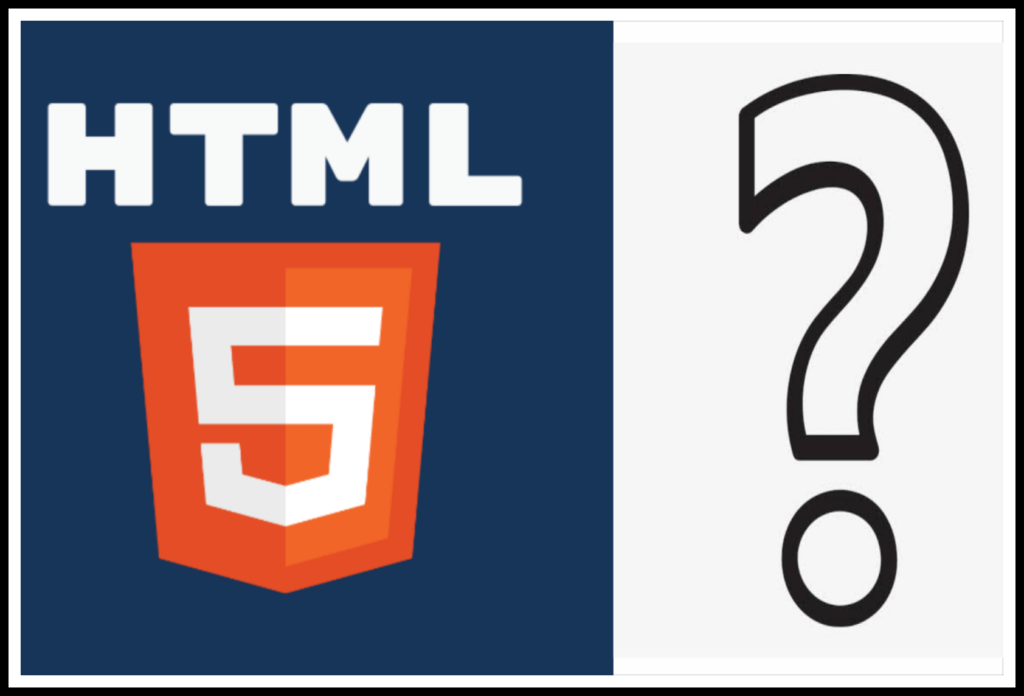
HTML stands for HyperText Markup Language. What is HTML?
HTML a standard markup language for web page creation. It allows the creation and structure of sections, paragraphs, and links using HTML elements (the building blocks of a web page) such as tags and attributes. What is HTML?
Hypertext: text (often with embeds such as images, too) that is organized in order to connect related items
Markup: a style guide for typesetting anything to be printed in hardcopy or soft copy format
Language: a language that a computer system understands and uses to interpret commands.
HTML has a lot of use cases, namely:
- Web development. Developers use HTML code to design how a browser displays web page elements, such as text, hyperlinks, and media files.
- Internet navigation. Users can easily navigate and insert links between related pages and websites as HTML is heavily used to embed hyperlinks.
- Web documentation. HTML makes it possible to organize and format documents, similarly to Microsoft Word.
It’s also worth noting that HTML is not considered a programming language as it can’t create dynamic functionality. It is now considered an official web standard. The World Wide Web Consortium(W3C) maintains and develops HTML specifications, along with providing regular updates.
Purpose of HTML ?
HTML (Hypertext Markup Language) is a markup language used to create the structure and layout of a webpage. It is used to specify headings, paragraphs, images, links and other elements of a webpage, and to define how they are arranged and displayed. The purpose of HTML is to provide a way to create structured documents, with a clear hierarchy of information, that can be displayed in a web browser.
Versions of HTML
Here is a list of the major versions of HTML, along with their release date:
- HTML 1.0: 1993 What is HTML? What is HTML? What is HTML?
- HTML 2.0: 1995
- HTML 3.2: 1997
- HTML 4.01: 1999
- XHTML 1.0: 2000
- HTML5: 2014
HTML has evolved over the years with the new specifications such as HTML5.1, HTML5.2, HTML5.3, HTML5.4 and so on which were released periodically as the new features and improvements were added to the language.
Can we create a webpage using HTML Only ?
HTML provides the structure and layout of a webpage, but by itself, it is not enough to create a fully-functional webpage. While HTML allows you to define the structure and layout of a webpage, it does not provide any styling or dynamic functionality.
To add styling to a webpage, you would typically use a language such as CSS (Cascading Style Sheets). CSS allows you to control the visual presentation of elements on a webpage, such as colors, fonts, and spacing.
To add dynamic functionality to a webpage, you would typically use a language such as JavaScript. JavaScript allows you to create interactive elements on a webpage, such as form validation, image sliders, and responsive navigation menus.
Together, HTML, CSS, and JavaScript are used to create fully-functional, interactive webpages.
It’s also worth noting that HTML, CSS and JavaScript are the core technologies of the web, however, there are many other technologies, frameworks, and libraries that can be used in creating webpages such as Jquery, AngularJS, ReactJS, VueJS and many more.
Advantages of HTML What is HTML?
HTML is a markup language that is used for formatting web pages of websites. Here are some advantages of HTML which is following as:
- Easy to understand due to a relevant and memorable HTML tag.
- HTML can be integrated easily with Javascript, Jquery, and CSS.
- HTML supported by all browsers (i.e. Google Chrome, Opera Mini, Mozilla Firefox, and many more browser)
- HTML is light weighted and fast to load.
- HTML is a free and open-source markup language, you don’t need to buy a single line of code to design your website.
- HTML have many tag and attributes which will short your line of code.
Disadvantages of HTML:
- It can create only static and plain pages so if we need dynamic pages then HTML
is not useful. - Need to write lot of code for making simple webpage.
- If we need to write long code for making a webpage then it produces some complexity.
- Security features are not upto mark in HTML.
What is HTML? What is HTML? What is HTML?

- HTML stands for HyperText Markup Language. It is a standard markup language for web page creation.
- HTML is used to create the structure and layout of a webpage. It is used to specify headings, paragraphs, images, links and other elements of a webpage, and to define how they are arranged and displayed.
